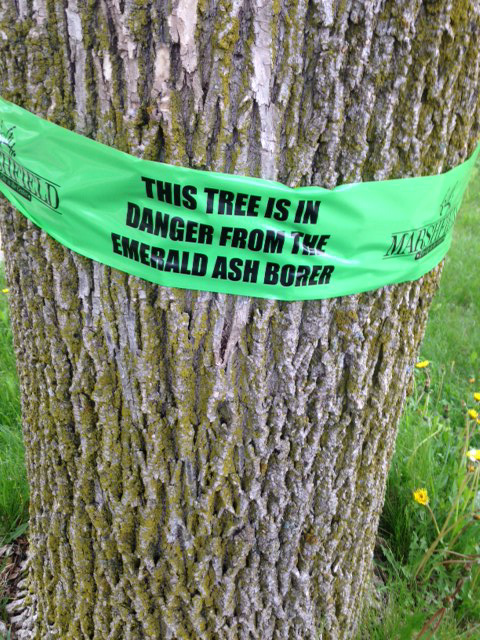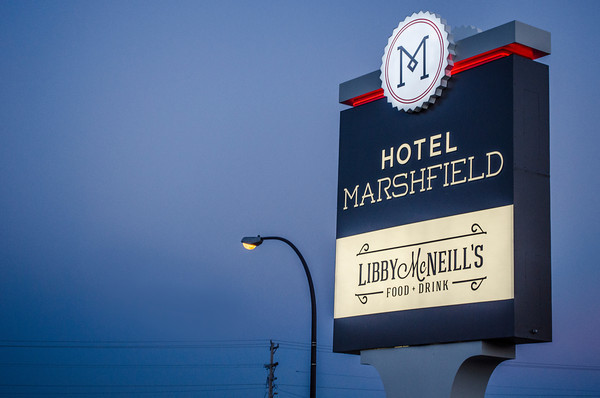Not everything that glitters is gold

The dangers of the emerald ash borer
By Tim Rasmussen
Marshfield Street Division Class Three Operator
In 2008 a glittery bug invaded Wisconsin. This bug is called emerald ash borer, Agrilus planipennis (EAB). Since its initial invasion in 2008, EAB has spread throughout the state with quarantines placed on 37 counties. Because of its rapid spread, EAB has the potential to decimate tens of millions of ash trees throughout the state and country.
The city of Marshfield has been a proud Tree City USA member for the last 33 years. The city has considered our urban forest a necessity to help reduce negative man-made side effects to our natural environment. The city has approximately 4,803 trees within the street right of way with 410 being ash species.
In response to the devastating effects of EAB, the city of Marshfield is proclaiming May 17-23, 2015, Emerald Ash Borer Awareness Week. The week is a great opportunity to remind Marshfield residents that they too play a vital role in this battle.
Memorial Day weekend marks the beginning of the summer camping season, and the risk is high for people to move EAB and other pests to new areas inadvertently through transporting of firewood. When traveling this camping season, remember to burn your wood where it is cut to prevent uninvited guests on your vacation.
This year the city of Marshfield is taking the opportunity to inform schools, businesses, industries, community groups, and citizens to take action against the spread of EAB. We have joined with several Boy Scout troops to place ribbons and informational cards on the city’s ash trees. These ribbons will symbolize the devastating effects that can occur in your neighborhoods throughout Marshfield when the infestation of EAB arrives.
When traveling through town, take note of the scenic view changes that could result if we lost these trees. The obvious effect of the loss of the ash trees will be the scenic view, but these trees are responsible for numerous other benefits.
They assist with 797,652 gallons of rainfall interception each year. When we put that into perspective, that is nearly equivalent to filling Hefko Pool 2 ½ times annually. Other benefits include moderating climate—shading homes, schools, businesses in warm weather months and slowing wind infiltration in the winter—and, thus, lowering energy costs as well as increasing comfort, improving air quality, and harboring wildlife.
The city of Marshfield has started an in-depth look at an EAB management plan. City street ash trees have been graded and put into three categories. The first category is “Removal,” which is any ash tree in a planting site not ideal for future growth. The second category is “Replace,” or any tree that has beneficial significance that could be regained in a short time frame from a tree of a different species. The final category is “Treatment,” which is a tree that has a significant positive impact on the environment and has an ideal planting site for future growth. Current and future funding methods for “Replace” and “Treatment” are being considered along with grant opportunities.
Ash trees on private property are not currently inventoried. The city recognizes that the largest impact may occur when private ash trees are affected by EAB. For this reason we ask that citizens take a look at their private tree inventory of ash to determine what management plan is best. The following resources can assist you when addressing your needs:
—Wisconsin Emerald Ash Borer information source: emeraldashborer.wi.gov.
—USDA National Invasive Species Information Center: invasivespeciesinfo.gov.
—Contact a local certified arborist at waa-isa.org.
If you believe a tree on your property is potentially infested with EAB, please contact the city forester at 715-486-2081 for further investigation. Preparation and planning is an important part of reducing the impact EAB will have on our community.
Leave a reply
You must be logged in to post a comment.






